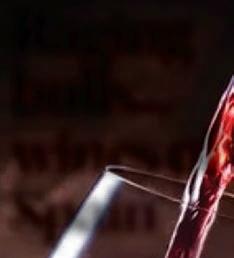
4 minute read
Food & Drink
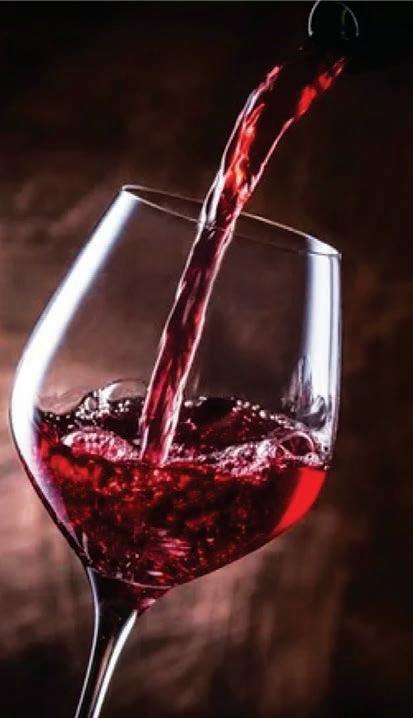
Me Come Dine With Runner
Advertisement
beans, chorizo & almonds

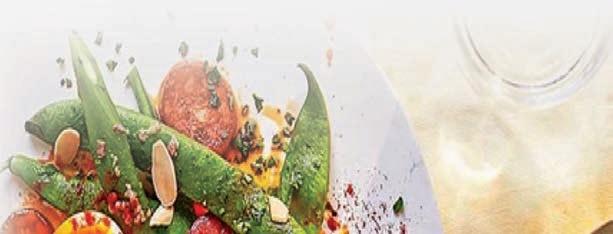
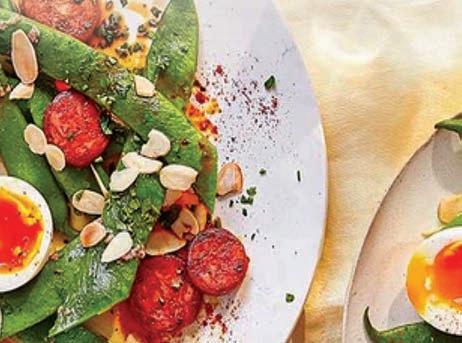
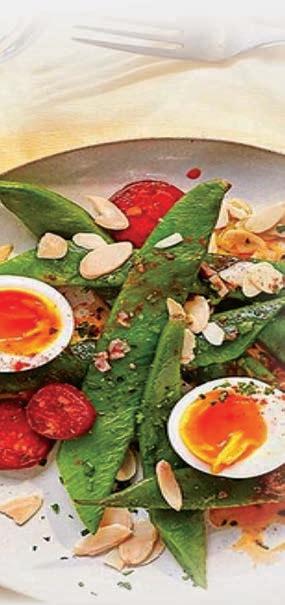
Preparation and cooking time
Prep:10 mins Cook:15 mins Easy Serves 4
Growing runner beans in the garden? Enjoy them at their very best in the late summer in this stunning light lunch or starter with chorizo, eggs and almonds.
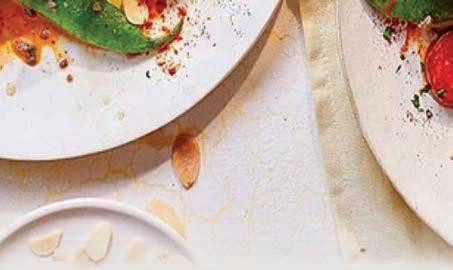
Ingredients
• 320g runner beans, halved • 50ml olive oil • 1 tbsp sherry vinegar • 3 anchovies, nely chopped • ¼ large chorizo ring, sliced • 4 large eggs • pinch of smoked paprika • 30g aked almonds, toasted • ¼ bunch of parsley, nely chopped
Method
STEP 1
Cook the beans in a pan of boiling salted water for 3-4 mins or until tender. Drain and set aside.
STEP 2
Whisk the olive oil, vinegar and anchovies together until smooth. Season with black pepper and toss with the warm beans.
STEP 3
Heat a dry frying pan over a medium heat and fry the chorizo for 2-3 mins until golden brown. Cook the eggs in a pan of simmering water for 6 mins 30 seconds. Drain, then rinse under cold running water to cool. Peel and halve.
STEP 4
Spoon the beans onto plates and top with the chorizo and eggs. Sprinkle with the paprika, almonds and parsley, then serve.
Just how healthy are baked beans?
ARE baked beans good for you? Discover the bene ts of eating pulses as part of a balanced diet, and how to choose the healthiest shop-bought varieties.
Baked beans are usually made with white beans (haricot or cannellini) in a tomato sauce along with spices and seasoning such as paprika, onion powder, salt and sugar.
Haricot and cannellini beans are a good source of protein and are high in bre, as well as being low in fat and calories. ey also contain minerals such as iron and zinc, and are a good source of B vitamins including folic acid.
If you are buying canned baked beans, it’s worth keeping an eye on the salt and sugar content. On average, half a can of shopbought baked beans can contain around 9g of sugar, which is 10% of the daily reference intake, and up to 1.2g of salt, which is 20% of the daily reference intake.
An average serving of baked beans is around 200g – half a 400g tin of shop-bought beans. However, according to the guidelines a portion of 80g of beans and pulses, approximately 3 heaped tablespoons, makes up one of your ve-a-day. If you eat more than this amount it still only counts once towards your ve-a-day. is is because although beans are a good source of bre, they contain a lower nutrient density compared with other fruit and vegetables.
Baked beans can make up part of a balanced diet, but it’s best to eat them alongside foods such as vegetables, eggs and slow-release carbohydrates to ensure a good balance of nutrients with not too much salt or sugar. Where possible, choose the lower salt variety or make your own.
Check the nutritional information on the label when buying shop-bought baked beans, and check for any additional ingredients as well as the salt and sugar content.
You can buy varieties that are lower in sugar or salt, but these often use stevia or arti cial sweeteners for avour.
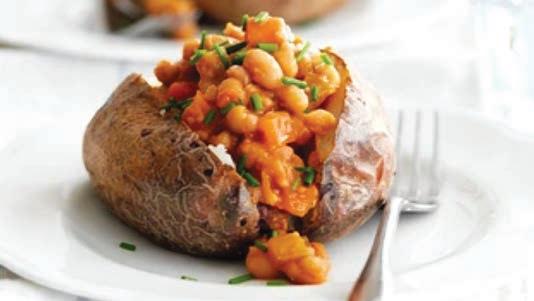
Raging bulls... wines of Spain
THE Torres family of Spain have a long history in wine production, a central thread of which is the Sangre de Toro, or Bull’s Blood, red wine. An ultra-reliable pizza and burger bashing red, it was rst produced in 1954 and is just as popular today.
An Australian wine called Running with Bulls appears to occupy similar ground but whether the Torres wine was a model for the Hill-Smith family’s Running with Bulls is an unknown but there are some real similarities in the tasting pro le of the wines, yet some big di erence too.
Both are 2019 vintage in screwcapped bottles, both are pitched in the same price ballpark, and both are in major supermarket chains. e main di erence is that while the Australian wine is made from Tempranillo, Torres sticks with Grenache and Carignan. e Australian wine also sees time in oak, unlike the Sangre de Toro.
Torres, Sangre de Toro Original 2019 Catalunya, Spain, Dry Red, Screwcap, 13.5%
e original and classic Spanish red, in production since the 1950s and still with a small plastic bull attached (though these days it’s an eco-friendly plastic). It’s a blend of mostly Grenache with Carignan. A little darker in colour than Running with Bulls, there’s a plum jam note on the nose, perhaps also a little darker in character, a little leather baked in there too. Equally sweet fruited on the palate, the style is remarkably similar really with copious ripe fruits, creamy background tannins and soft acidity for crowd-pleasing appeal.
About a tenner at good wine outlets.
Running With Bulls, Tempranillo 2019 South Australia, Australia, Dry Red, Screwcap, 14.0%
Barrossa-grown Tempranillo is fermented with wild yeasts and aged in oak for this red wine from the Hill-Smith family, who own Yalumba and Jansz among other brands. ough it weighs in with 14% alcohol, the colour is medium to pale, suggesting a lighter touch on the winemaking, and the nose has cherry cola aromas, a touch of wild strawberry and spice. In the mouth the fruit is super sweet, a creamy fruit coulis style, with barely perceptible tannins and ripe, generous acidity barely ru ing the ow.
About a euro or two more expensive and, again, available at good retailers.









